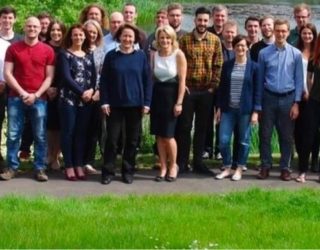Thomson Ecology has been involved in wind farm projects in the Humber area for over five years and has been responsible for undertaking ecological surveys on the landfall cabling routes for two offshore wind farms in the region.
These cable routes can be up to 30 km in length, leading to requirements for surveys for a wide range of fauna, including bats, badgers, breeding birds, great crested newts, marsh harriers, otters, reptiles and water voles. A Phase 1 habitat survey allows many of the key features and habitats to be identified. This can then be followed by species surveys to identify key sites for each species and to capture data on populations present and so provide information required for mitigation design.
We surveyed over 100 ponds to determine which were potential breeding ponds for great crested newts. We identified where species were likely to be affected by the works and developed strategies to ensure negative impacts were minimised. For example, we recommended that jointing bays, required for connecting lengths of cabling, were set up away from breeding ponds. This meant that contractors could get to these areas easily without affecting the great crested newts.
Water voles, although in active decline in many parts of the country, are still relatively widespread in the Humber region, as the entire area is criss-crossed by a large number of drainage ditches, which provide suitable habitat for them. We identified a number of active sites. In most cases it was possible to use horizontal directional drilling to install cables under the ditches without affecting the water voles.
We also identified bat roosting areas, including specific trees and buildings. In many cases these were directly mapped with GPS, and this information used to ensure that the trees were retained throughout the development programme.
Through this combination of surveys we could develop mitigation plans for the entire routes and build in key timings to make sure works were carried out at the right time of year to avoid harming any species present.










